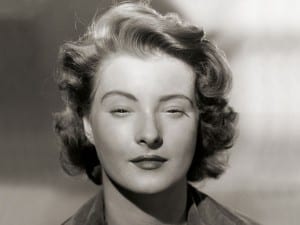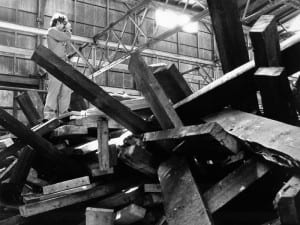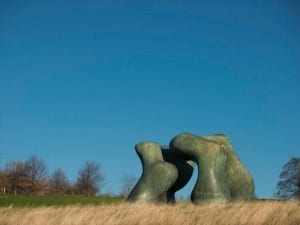The Great Journey into Space is the second solo exhibition by Belgian artist Evelyne Axell (1935 – 72) at Broadway 1602. Axell was already an acclaimed film actress and screenwriter before turning her attention to painting, for which René Magritte was her artistic mentor. Axell developed a feminist vision of Pop Art in the 1960s and early 1970s, focusing on psychedelic, erotic paintings of female nudes with an added focus on space travel. This Space Age iconography was typical of its time and Axell’s work fuses this emancipatory ethic with elements of sexual revolution, many of her works also referencing the female reproductive system.
Valentine (1966) successfully illustrates this point, essentially a tribute to the first female cosmonaut and Communist hero, Valentina Tereshkova, who researched the effect of space travel on the female reproductive system. The painting depicts the silhouette of a female body with a zipper representing a space suit, whilst an astronaut helmet is positioned next to her, almost trophy-like, iconic and deliberately overstated.
Une femme, seule (1965) and Seule, une femme (1965) portray a pop-art womb, egg-shaped and uniquely present a vision of restricted, paranoid space. Autoportrait (1971), Les Pensees Intimes (1972) and Le Desir (1969) again portray the nude female form, each possessing a confidence and an eroticism that presented a significant challenge to the art world conventions of her time.
10 Sketches and Preparatory Drawings for Vitrine (1960’s/70’s) is a fascinating presentation of sketches, drawings and photographs, documenting Axell’s time as a groundbreaking and experimental artist. It is a treasure trove of her activity, an insight and exploration of her imagination and creativity underpinning the time span of the exhibits.
Cercle Vicieux/Sans Titre (1969) is Axell’s only painting that shows a male nude and for this reason it stands alone, albeit containing the same recurring theme of space travel. Disconnected and somewhat desolate, it evokes the majesty of a grand departure, floating above earthly concerns, far beyond the reach of civilisation. Echoes of other-worldliness can also be found in the screen painting La Cloture or La Cloison (1967) which shows two female nudes guarding the gateway to an unknown dimension. It is startlingly effective, a starkly rich and symbolic statement of intent.
In 1969, Axell staged a Happening at the opening of her exhibition at the Foncke Gallery in Ghent, Belgium, bringing a young woman wearing only an astronaut helmet into the gathered crowd. To a musical backdrop, Axell then dressed the model in underwear in a reverse-striptease to the delight of the rapturous audience. Pierre Restany, the leading French critic closed the evening, leading a debate on “Sexual Revolution in Art”. The event is captured here in Happening (1969), a series of black and white photographs.
Axell’s range of oil paintings, collages, drawings and photographs demonstrate her intense creativity that took place in a relatively short, concentrated period of time. The works here are often highly experimental and are very much of their time, showing great initiative and directness in an era of psychedelia. Eroticism and the female nude play a key role throughout but it has to be said that the impact now is sensual rather than sexual. In context, Axell’s work can be most accurately described as Surrealist Pop Art with a provocative edge, namely the newly gained freedom of women and their bodies and the hedonistic, pop impulses of the 1960’s.
Evelyne Axell, The Great Journey into Space, 20 April – 25 August 2012, Broadway 1602, 1181 Broadway, Floor 3, New York, NY 10001, USA. www.broadway1602.com
Credits:
Evelyne Axell, The Great Jouney into Space, Installation view at Broadway 1602
Text: Matt Swain




